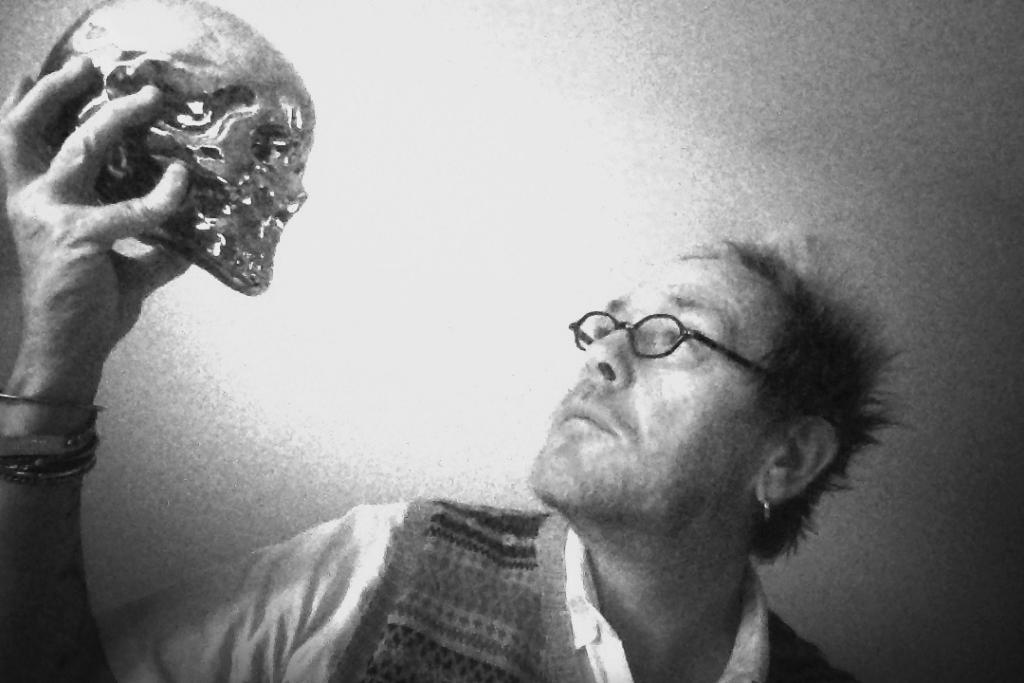15
Skulls

I have a skull fetish. Almost everyone does these days, it seems. I claim nothing special or exclusive about my relationship to skulls, except that I was an early adopter. And I’m not interested in them just for the aesthetics. Any old skull won’t do. Lots of people who know me give me skulls, but most of them I don’t like. That pirate or Halloween stuff, for instance, is not where my interest lies.
My fascination with skulls stretches back to my childhood, when I had an anatomy book that fascinated me, particularly the bones. Using the macabre pages of that book as source material for my own drawings, I developed a lifelong interest in bones and skeletons, death and dying.
There was one other inspiration for my preoccupation. The town where I grew up was home to a tiny one-room museum dedicated to Oliver Cromwell, leader of the Puritan army and the Lord Protector of England. It was nothing fancy—old, dusty documents, mostly—but it held a few items of interest: a Roundhead helmet, Cavalier uniforms, and other bits and pieces from the English Civil War era. It also had Cromwell’s death mask.
Biology at school played a part alongside my art, and somewhere in the deep recesses of my youth I started collecting skulls—pictures first, then the real thing (or versions of it). They are trendy now, but my interest has always been more focused on the old idea of memento mori, or reminders of death. I like being reminded of mortality.
Skulls are classified as vanitas objects. Medieval artists often used things such as skulls, hourglasses, and old books to invite sober reflection on one’s existence and to remind us that life is short and uncertain. Every skull has its own unique particularities, but they share a commonality in that everyone has one. Thus, skulls represent a side of life on which we seldom reflect: the unseen, the uncertain, and finitude.
I wonder if, on an unconscious level, we still employ skulls today to achieve that same ancient end. They serve as reminders of a deeper reality in the midst of the sea of empty cultural promises of happiness and unlimited possibility in which we precariously swim. Skulls remind us of life’s limits and uncertainties.
Perhaps that’s also why the Day of the Dead, Halloween, and zombies and vampires are such pervasive images within our current popular culture. We don’t speak about this knowledge we hold deep within ourselves, so instead we set the symbols in motion. Art critic Hal Foster calls this traumatic realism, a term he uses particularly in his writing about Andy Warhol’s work. In traumatic realism, the artist takes on the nature of what shocks him as a mimetic defense against the shock. Perhaps that how skulls function for us, employed almost as a palliative (to reference Freud) that shields us, while simultaneously reminding us of the reality it represents.
We live with constant tension when we have very little cultural vocabulary to help us come to terms with reality. Skulls beckon us toward that reality, even as they remind us of what we are repelled by, or simply afraid of: death. All is vanity, the skull says.